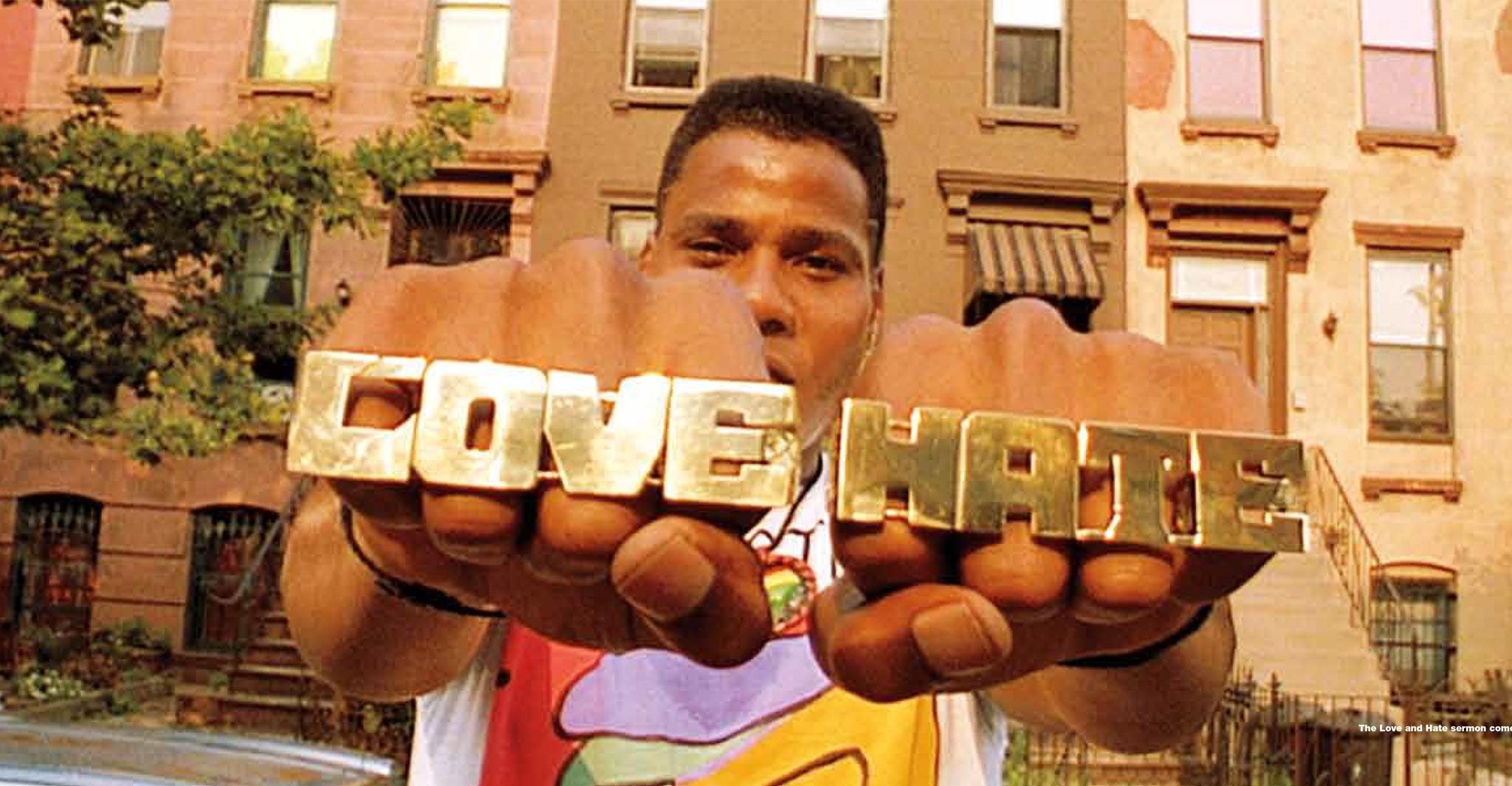One of the things that stood out to me is the editing that Bordwell and Thompson describe in the film. I noticed that the actors made eye contact with the camera a lot, especially through an eyeline match. For example, when Radio Raheem was talking to Mookie about his rings, the camera turns towards Radio Raheem from Mookie’s eye line match. While the camera turns to face Buggin’ Out, the scrubbing increases which transitions to the close-up of Radio Raheem smoothly. The close-up shots of the characters also encapsulates the heat as the sweat running down the character’s faces are shown, which seems to validate how everyone is angry at everyone at the beginning, but later presents deeper as racial conflict.

Another thing that stood out to me from the Bordwell and Thompson reading is when they say that “In traditional classical films, clear-cut goals generate conflict, since the characters’ desires often clash. Lee neatly reverses this pattern by playing down goals but creating a community that is full of conflict from the very beginning of the film.” I was a little confused on how Lee reverses the pattern because I thought that the goals of the characters were obvious: Mookie wants money, Sal wants to run his business with his sons, Buggin’ Out wants black heroes on the pizzeria wall, etc. Through these desires of the characters, I thought that Lee was able to highlight the racial conflict through the clash of these desires. Especially, the claim ownership over their own space was emphasized. Moments from the film that presented this was when the white guy with the bike is yelled at because he doesn’t seem to belong in the neighborhood even though he lives in the brownstone. The group was trying to kick him out to create a border between the white guy’s space and the group’s space. In addition, Sal continually emphasizes how he is the boss of his pizzeria and that he has built the pizzeria on his own. Going back to the quote from Bordwell and Thompson, I was a little confused how Lee reversed the pattern, but regardless I thought the perspective was illuminated.
Lastly, the end of the film ends with a quote from Martin Luther King and a quote from Malcom X. Dr. King’s quote begins, “Violence as a way of achieving racial justice is both impractical and immoral”; Malcolm’s concludes, “I don’t even call it violence when it’s self-defense, I call it intelligence.” These two quotes go against each other which ties back to how the title of the film is Do the Right Thing. I think that the two quotes shown at the end represent how the “right thing” is not always clear and there is not always a “right answer”. This ideology is portrayed throughout the film because throughout the film, everyone refrains from violence, but the racial tension continues. At the end, violence breaks out and while the conflict is temporarily solved, from a broader perspective, the conflict is only stopped temporarily. Lee’s strategic use of these two quotes at the end help tie the movie’s themes together.
Hi Sophia! I couldn’t agree more with your thoughts on Spike Lee’s “Do the Right Thing.” The film truly is a masterpiece that tackles complex societal issues of race, power, and economic disparities with unflinching honesty. However, I would argue that the film isn’t just about critiquing stereotypes, but it’s also about breaking them down and finding common ground. The film also challenges preconceived notions by portraying characters with multifaceted identities, transcending the limitations of stereotypical representations. Overall, “Do the Right Thing” is a thought-provoking film that challenges us to confront uncomfortable truths and work towards a more equitable society.